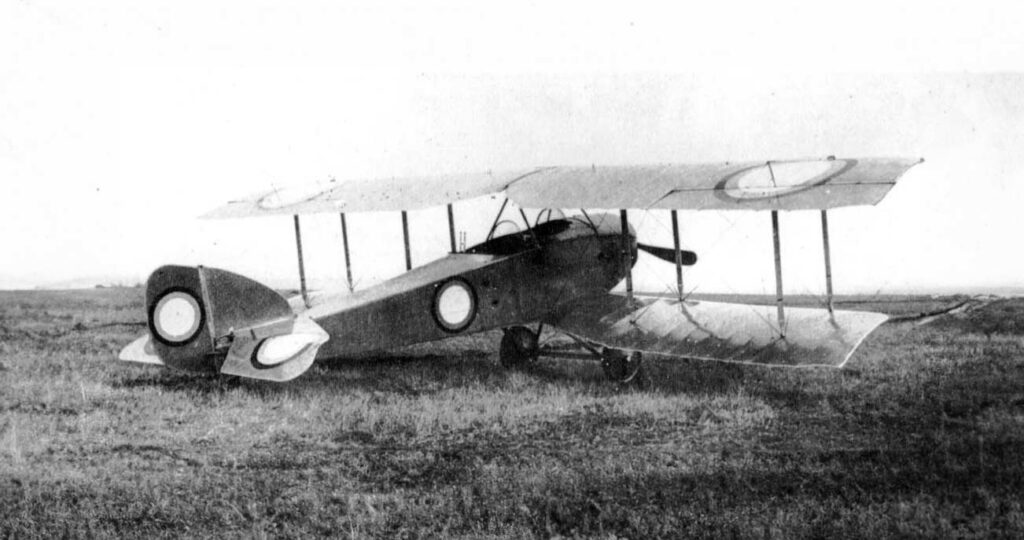Dive into the Anatra D-Series, a 1916 Russian reconnaissance biplane, pivotal during WWI with its unique design and significant operational role. The Anatra D-Series represented Russia’s foray into the world of aerial reconnaissance during World War I. This biplane played a role in intelligence-gathering and combat missions, illustrating Russia’s advancements in aviation during a transformative period in history.
The Anatra D-Series emerged as an answer to Russia’s call for effective reconnaissance aircraft during World War I. As the theater of war shifted to the skies, the development of aircraft that could gather intelligence became paramount.
History of the Development of the Anatra D-Series
Context of the Era
As World War I progressed, the battlefronts expanded, and trenches snaked across Europe, making aerial reconnaissance increasingly vital. Major powers raced to develop aircraft that could provide vital intelligence and shape the war’s outcome.
Need and Objective
The vast expanse of the Eastern Front required the Russian Empire to have aircraft capable of long-range reconnaissance. The Anatra D-Series was conceptualized to meet this demand, offering a platform for reconnaissance and light combat roles.
Development and First Flight
The Anatra Aircraft Plant in Odessa took on the challenge of producing a robust and versatile reconnaissance biplane. Following a period of design and testing, the Anatra D-Series made its maiden flight in 1916, signaling a new era for Russian aerial warfare capabilities.

Design of the Anatra D-Series
Technical Specifications
The Anatra D-Series, predominantly made of wood and fabric, was a two-seat biplane. It had a length of approximately 26 feet (7.9 meters) and a wingspan of around 39 feet (11.9 meters).
Advantages and Drawbacks
One of the notable advantages of the Anatra D-Series was its stability in flight, crucial for reconnaissance tasks. However, compared to some Western counterparts, it was slightly underpowered, affecting its overall performance.
Performance of the Anatra D-Series
Engine and Power
The aircraft was powered by a 130 horsepower Le Rhône 9J rotary engine. This engine allowed the aircraft to achieve speeds of up to 75 mph (120 km/h).
Altitude and Range
The Anatra D-Series had a service ceiling of around 11,500 feet (3,500 meters) and could cover distances of up to 200 miles (320 kilometers).
Comparison with Competitors
When juxtaposed against its contemporaries like the German Albatros C.III, the Anatra D-Series lagged in terms of speed and range. However, it offered a stable platform for reconnaissance tasks, catering to the specific needs of the Eastern Front.
Military Use and Combat of the Anatra D-Series
Armament
For defense, the Anatra D-Series was equipped with a single rear-mounted machine gun. This allowed the observer to fend off enemy fighters that posed a threat during reconnaissance missions.
Combat and Operations
Primarily used for reconnaissance, the Anatra D-Series saw action across the Eastern Front. Its contribution was pivotal in intelligence-gathering, which shaped the tactics and strategies employed on the ground.
Competing Aircraft and Export
The aircraft faced competition from the likes of the aforementioned Albatros C.III and the Austro-Hungarian Hansa-Brandenburg C.I. Some units were sold to the Ukrainian People’s Republic during the subsequent conflicts that followed WWI.
Service Duration and Replacement
Post-WWI, the Anatra D-Series saw reduced service, gradually being replaced by more modern aircraft designs as aviation technology progressed.
The Anatra D-Series stands as a testament to Russia’s efforts in advancing its aerial reconnaissance capabilities during World War I. While perhaps not the most advanced aircraft of its time, its contribution to the war effort, particularly on the vast Eastern Front, was undeniably significant. It symbolizes a period of rapid innovation and the crucial role of aerial intelligence in modern warfare.
Back to the Spy Planes section.